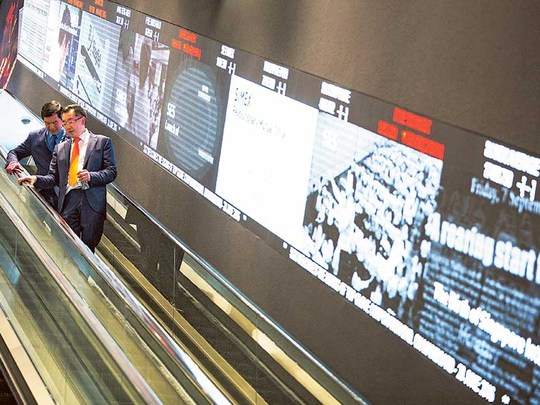
Singapore: The start of derivatives trading in Singapore was delayed on Thursday, less than six months after Singapore Exchange Ltd’s chief executive officer apologised for a previous disruption.
Futures on the Nikkei 225 Stock Average, which usually open at 7:30am local time, began trading at about 10:15am, according to data compiled by Bloomberg. The contract is one of the most popular at Singapore Exchange, with 133,000 of the December futures changing hands on the venue Wednesday. The delay also affected India’s Nifty 50 Index Futures, which usually start trading at 9am local time, and iron ore contracts, Bloomberg data show.
SGX has had a number of technical issues hit its markets in recent years. In July, it halted stock trading midmorning and failed to reopen for the rest of the day, despite two pledges to do so. CEO Loh Boon Chye apologised for that malfunction, while his predecessor, Magnus Bocker, in 2014 issued a public apology after two trading disruptions in the space of a month. Those mishaps led to a reprimand from the Monetary Authority of Singapore.
Thursday was the final day of trading for the December Nikkei contract, according to data compiled by Bloomberg. Expiry days usually see heavier-than-usual volume. While trading in the futures was down in Singapore, it continued in Japan at Osaka Exchange Inc.
“For today, some volumes might get pushed to Osaka,” said Eddy Lim, CEO of Zhongtai International Securities in Singapore. “In the long term, SGX should still retain its position as it’s a cheaper alternative — unless the alternative starts to bite my pocket due to disruptions.”
A representative at Japan Exchange Group Inc., which operates the Osaka exchange, declined to comment.
A specific issue relating to the December Nikkei contract was the cause of the delay, SGX said in a statement, without providing further details.
While traders had the option of sending orders elsewhere, the disruption may have created some issues, said Nick Ronalds head of equities at the Asia Securities Industry and Financial Markets Association in Hong Kong.
“A futures trader who needs to hedge or unwind a hedge, if his preferred market isn’t available, needs to find an alternative which wont be a perfect match due to different size of contract,” he said. “You also have two positions rather than one offsetting the original one.”
Technical Malfunctions
The exchange operator’s recent technical malfunctions also include a near two-hour disruption in derivatives trading in August 2015 and a one-hour halt in October 2015. MAS’s acceptable maximum unscheduled downtime for financial institutions is four hours in any 12-month period.
SGX in September formed a committee to look at ways to improve the operational resiliency of its markets after the July malfunction.
“It’s not unusual for a technical glitch to happen,” said David Gerald, president of the Securities Investors Association of Singapore, an industry group representing shareholders. “What’s important is that we’ve got to recover quickly and ensure that the market functions and trading is orderly.” Gerald is a member of the committee reviewing SGX’s backup systems and processes.












